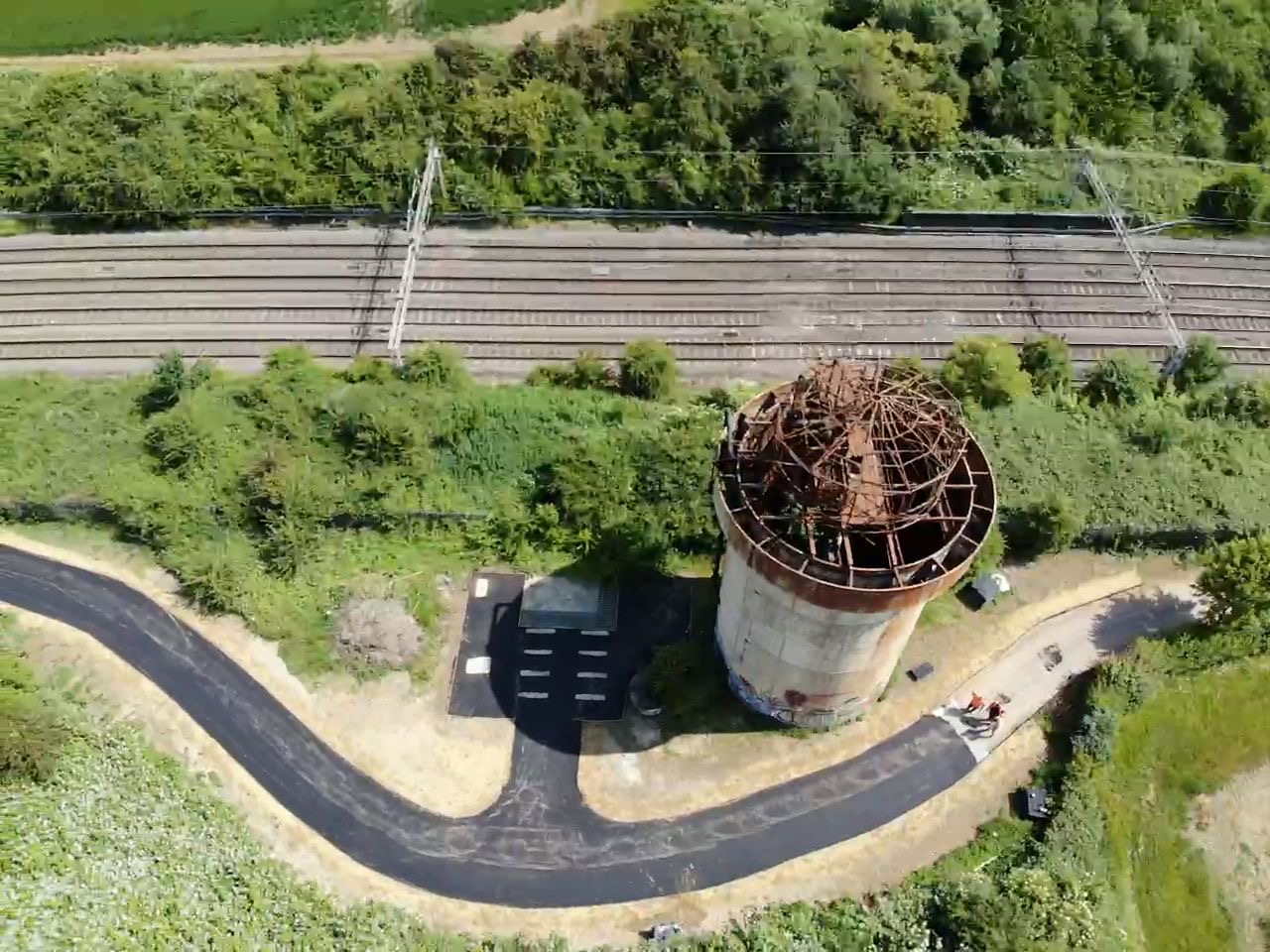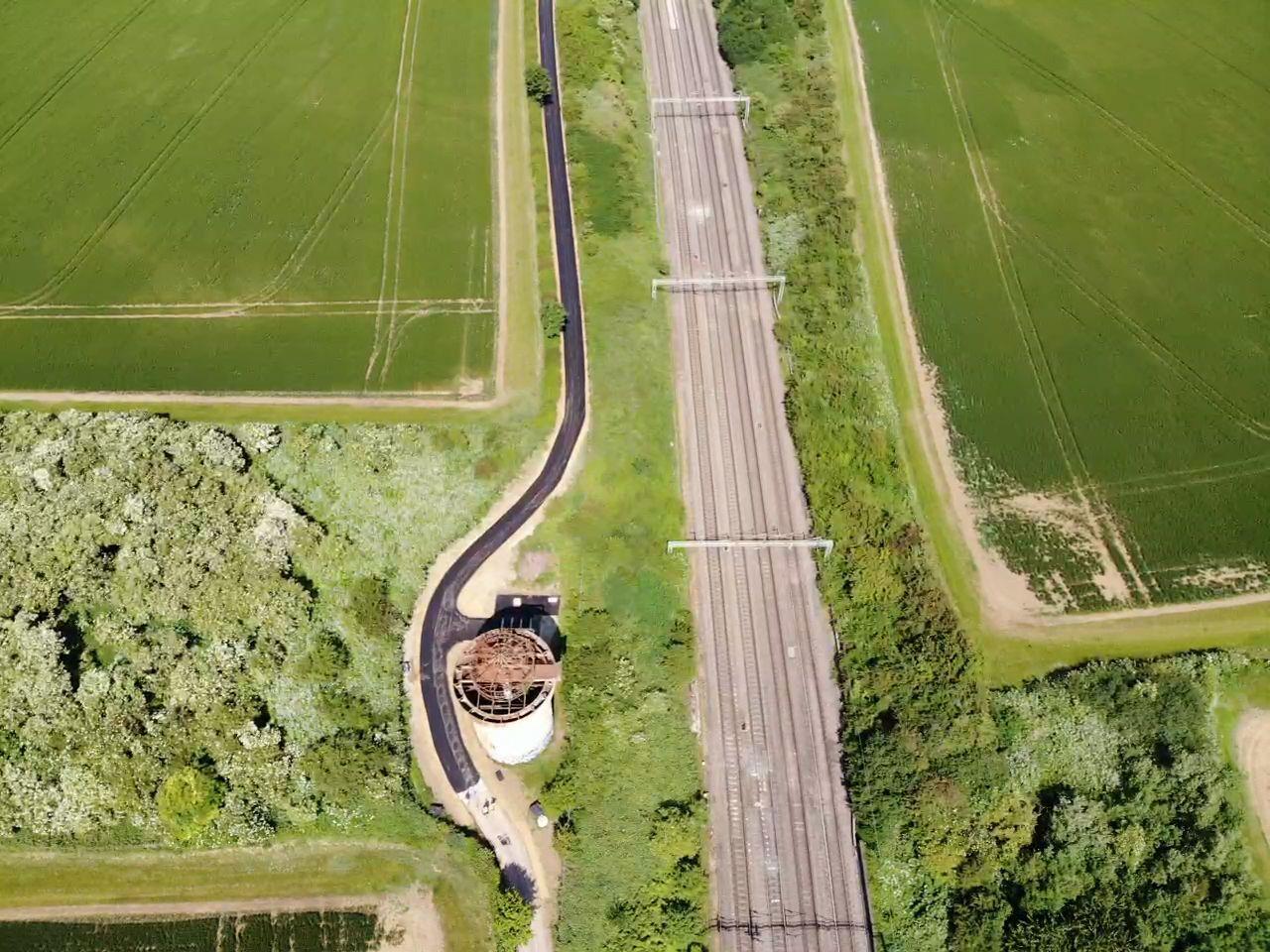UK Councils Prevent Flooding On Walking and Cycling Routes – Where Traditional Drainage Systems Had No Answer

Two pioneering councils prove that keeping residents moving year-round is possible - while saving costs, reducing carbon footprint and protecting wildlife habitats.
Councils across Britain face major challenges to unlock active travel due to heavy more frequent storms making walking and cycling paths impassable every winter, two authorities have cracked the code, delivering transformative drainage and flood prevention solutions on critical routes that were previously unusable for months each year.
North Yorkshire Council and Milton Keynes City Council have partnered with Civil Water Management (CWM) to prove that the UK’s chronic path-flooding problem has a solution.
The results are capturing the attention of councils across the UK: flooding prevented, up to 50% carbon savings, ~19% cost reductions - and paths that actually stay open when it rains.
This isn’t theoretical. This is two winters with four named storms providing monitored performance that’s now expanding across multiple sites.

Pannal Village, Harrogate: The Breakthrough That Started It All
A vital path leading to Crimple Meadows in Pannal was failing the community. Every winter, flooding made it impassable for the families, dog walkers, children and residents who relied on it daily. What should have been a safe, accessible route became a muddy barrier, forcing people back into their cars or to stay at home altogether.
Traditional pipe-and-gravel drainage couldn’t solve it - too disruptive, too damaging to tree roots and surrounding wildlife, too expensive - and, frankly, it wasn’t working anyway.
North Yorkshire Council took the bold step of trying something completely different. They deployed CWM’s Hydrotrench - a turnkey modular drainage system made from recycled tyre rubber. Where traditional methods has failed, it was installed rapidly with minimal disruption - delivering planning and design approvals with award winning results:
- 100% drainage effectiveness against Storm Bert, Darragh, Éowyn and Amy
- Minimal disruption during installation
- Tree roots and wildlife protected with no excavation damage
- Full accessibility restored for walkers, families, children and dog owners year-round
“Keeping our paths open and safe for all seasons is central to encouraging active travel,” said a North Yorkshire Council spokesperson. “This drainage method means less maintenance, less disruption and more residents choosing to walk instead of drive.”
This pioneering project caught the attention of other councils nationwide… including Milton Keynes City Council.

Milton Keynes: Scaling the Solution to the National Cycle Network
Watching the success in North Yorkshire, Milton Keynes City Council and the Walk Wheel Cycle Trust immediately recognised the opportunity. Route 6 of the National Cycle Network faced the same chronic flooding - a vital 2.5km section connecting the communities of Castlethorpe and Wolverton to the local business park and station was completely impassable every winter. Families avoided it. Disabled users couldn’t use it. Commuters gave up and drove instead. A much-needed solution to upgrade, resurface and widen the path had to be found.
They wanted to deploy the Hydrotrench drainage system solution.
CWM pioneered the breakthrough as they had at Crimple Meadows, and the entire design of the 2.5km route got the greenlight from Milton Keynes City Council.
Sustainable drainage plan approved. Environmental Impact Assessment signed off.
The results were equally as impressive:
- Zero flooding winter 2024 (continuous camera monitoring)
- Up to 50% less carbon
- ~ 19% cost reduction
- 1km extended June 2025 (more planned)
- £3.1m social value forecasted (full route, 10 years)
The Department for Transport and Connected Places Catapult didn’t fund this as a one-off experiment; they backed it because they recognised its national scalability to connect communities through their Rural Transport Accelerator Programme.
Walk Wheel Cycle Trust Senior Engineer Nigel Brigham summarised the severity of the path condition before work began:
“The path was in a dreadful state... most people were put off using it. The local community were keen to find a solution.”
A local member of the community perfectly summarised the impact of the upgrade:
“These improvements are excellent and have been well needed. I am keen to do more bike rides with my 5 year old and these improvements will certainly help this as it’s been made much safer for her.”
North Yorkshire Council had already clearly shown the solution worked. Milton Keynes City Council proved that it is scalable and can be used as part of national infrastructure projects.

Why Leading Councils Are Acting Now on Active Travel Flooding
Across the UK, thousands of miles of walking and cycling routes are increasingly impacted by flooding and heavier storm events in the face of climate change. This isn’t a series of isolated incidents - it’s a nationwide infrastructure challenge that must be solved to get the value and impact that the billions of pounds invested in active travel deserves.
Councils are familiar with the severe challenges presented by walking and cycling routes:
- Ageing drainage systems that need constant, costly repairs
- Constraints that make traditional upgrades unviable
- Gaining planning, environmental and sustainability approvals
- Frustrated residents unable to use paths all year round
But there’s good news: councils like North Yorkshire and Milton Keynes City Council have demonstrated a better way forward.
“Lower cost, lower maintenance, lower carbon — and it actually works,” says Carl Hopkins, Managing Director of Civil Water Management.
"Pannal Village proved the concept at Crimple Hall. Milton Keynes City Council proved it scales to national transport infrastructure. The question now is: how quickly can this become standard across the UK’s active travel network?”
The opportunity for Local Authorities is vast. This isn’t about taking a risk on untested ideas. It’s about building on successful, evidence-based strategies already being implemented - with clear results.

The Next Step
With the groundwork laid by early adopters - now is the moment to lead the way forward - to deliver infrastructure that performs better, aligns with climate commitments, and supports year-round accessibility to active travel infrastructure that stands the test of time.
Get in touch. Find out more about how Civil Water Management can help to unlock the engineering advantage for your next project.
To talk to our specialist drainage team call 0203 189 1468 or email in**@******************nt.com

